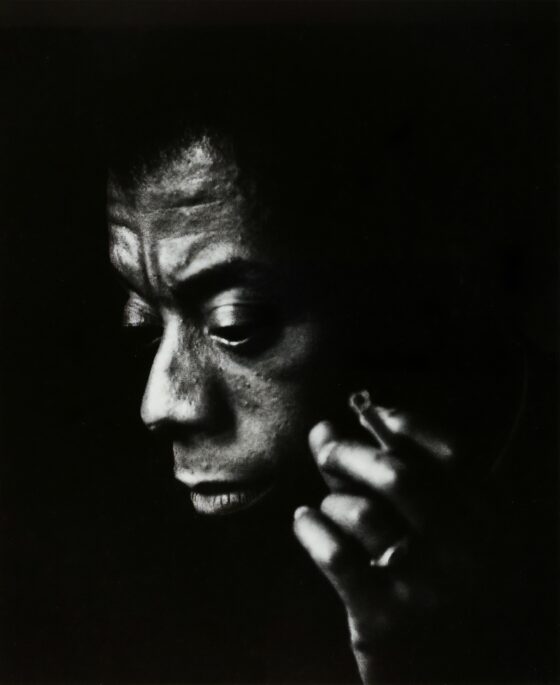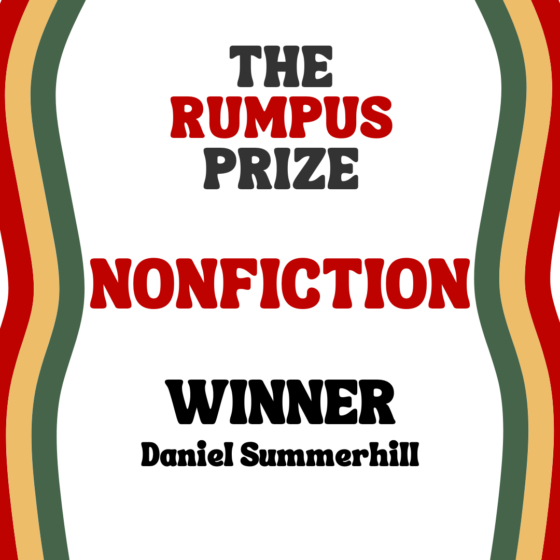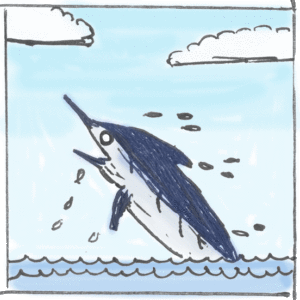
In the 1940s, a young boy, Peter, summered with his family on Nantucket, angling for marlin off the coast with his father. Every day, dorsal fins periscoped above the waves—black shadows slicing through water, imprinting on the boy. What beast was attached to these water knives as they slew the sea?
These fish gifted Peter an insatiable curiosity. Bookish and studious, Peter read about fishermen catching a 4,500-pound monster off the coast of Long Island. He researched a shark striking heat-ridden New Jersey in 1916, consuming four swimmers, including a child, and nibbling another. In response, as Michael Capuzzo wrote in Close to Shore, America seized during a heat wave, unable to swim, afraid of the 2,370-mile coast. President Wilson called a cabinet meeting to declare, “A war on sharks.”
Peter elongated into an adult and sustained himself as a writer. He reported for the Washington Post and cobbled speeches for President LBJ: a political predator who showed off his elephantine penis to reporters in bathrooms and called advisor meetings while defecating. But a different monster swam in Peter’s dreams, so he quit and put that dream to paper.
For his book, Peter engulfed the science of Selachimorpha. He discovered that a great white shark’s skin is coated in denticles, literally “tiny teeth,” a design the Navy tried to mimic with its first submarines. Peter marveled that a great white shark’s mouth sprouts 300 serrated blades that grow and migrate about the gums. He learned that a great white’s jaw stretches when the animal attacks, teeth spearing past the snout, the whole fish leading with its hunger.
During his research, Peter may have also realized that great white sharks are one of the few gill-bearing creatures that break the water to scan the surface, peeping beyond its world and into ours.
What is it that makes us peer back, make monsters, and ride them, they who would eat us?
Millions upon millions upon millions of humans were attracted to Peter’s dream in book form—a story about an unstoppable predator serial-killing a small island, a gift to him from those first Nantucket shadows. Published in February of 1974, Peter’s novel, electrified The New York Times, which said it held a “rich thematic substructure.” The Washington Post wrote that the book, “forged and touched a metaphor that still makes us tingle whenever we enter the water.”
For many readers, it was their first time perceiving undersea horror, and Peter situated them in the beast’s mind:
The fish smelled her now, and the vibrations—erratic and sharp—signaled distress. The fish began to circle to the surface. Its dorsal fin broke water, and its tail, thrashing back and forth, cut the glassy surface with a hiss. A series of tremors shook its body.
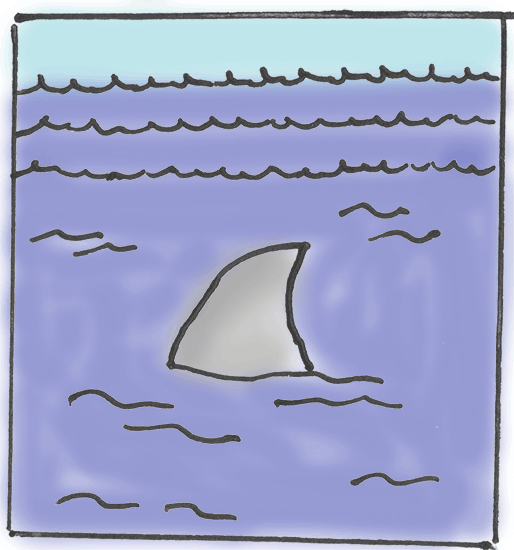
A movie metastasized from his book and chomped an inflation-adjusted equivalent of $1.2 billion at the box office, revolutionizing the film industry, which came to depend on summer monsters.
The sea beast swam deep into the cultural amygdalae, the fighter-flighter buried in the back of our minds, still warring with savanna predators. The tale’s teeth clenched tight onto brainstems. A story, writes film critic Antonia Quirke, “which seems always to have been nebulously there, uninformed but already comprehended.”
In 1990, Peter’s book became an amusement park attraction. At age eight, I stalked his monster at Universal Studios, Florida. You, too, could ride the horror for $33 park admission—a late birthday present from my mother. During the cruise, Pontoon boats with passengers circled a lagoon, encountering 24-foot robot sea creatures that each weighed three tons and sprang from the water with the thrust of a Boeing 747 engine. The sharks rammed the pontoon ships, and passengers would grab hold of each other and scream. When timed right, the leviathans gnawed the pontoons, lifting tourists out of the water, and thrashed them like a dog with a chew toy.
Finally, the boat’s “skipper” (a teenage thespian) fired a “grenade” at the water as air cannons hissed, an explosion went off, and actual meat chunks geysered into the air. Raw fish and fake blood rained onto passengers. The guides and robots repeated the carnage every six minutes—12 hours a day, seven days a week.
Until they didn’t. For Peter’s horror ride rarely worked. On opening day in 1990, the ride operated just two hours before shutting down, embarrassing Steven Spielberg, then in attendance. The sharks tore out of their concrete foundations. Thousands of guests scarfed refunds.
I pilgrimaged to Orlando because I was terrified.
A few years before, my immediate family crashed a rich aunt’s island condo. Two cousins shut me in a bedroom while our parents tequilaed poolside. Cousin R popped a worn tape into a VCR, a turtle shell-tinted TV screen. Cousin A asked me not to cry.
I’d learned from pop-culture osmosis about the first victim, a woman skinny dipping after partying, devoured at night. But nothing prepared me for the boy, tanned like me, paddling in red trunks like mine, arming a raft identical to my father’s. The boy begs his mother to let him back into the blue, as I did, every day when staying on the island. Then in creeps John Williams Oscar-winning overture—cellos, trombones, basses, tuba—what at first listen made Steven Spielberg laugh. Dun-dun… dun-dun… dun, dun, dun, dun. “So simple, insistent and driving, that it seems unstoppable,” Williams once said of his theme.
A shape spears the sea. The police chief looks on in horror. The child thrashes, blubbers, and dematerializes. For years I didn’t know what happened next because I dry-heaved to the bathroom as my cousins followed me with beseeches to be quiet, to never tell. I locked myself inside. In some ways, I’ve never left. I still mistrust the ocean.
Millions of young viewers traumatized themselves witnessing Peter’s monster devour a child, as well as a woman and two other men. In communications scientist Joanne Cantor’s studies, 83 percent of respondents claimed they had ongoing problems rooted in their viewing Peter’s story on screen as children—anxiety, hydrophobia, panic attacks, which lasted well into adulthood.
“The amygdala holds on tight to memories,” Cantor said. It’s what gives us fears of sharks and shadows well into adulthood.
Shark ecologist R. Aidan Martin once said that Peter’s story “did for swimming what the movie Psycho did for showering in motel rooms.”
Peter’s monster haunts the unconscious; his story ended whole childhoods. It gobbled up a sense of infinitude, the future reaching out like the sea and carpeting a planet with promise. In place of that future, was the present—with all of its teeth. Horror brings us to the current moment more than any other mode of storytelling. In exchange for distant hopes and future goals, horror gifts us with a sense of imminent preciousness, awareness of that which is about to be taken away.
When producers acquired the rights to Peter’s book, they assumed it was possible to capture and train a shark, like SeaWorld trains dolphins (it’s not). Instead, Steven Spielberg employed a special effects crew that conjured three pneumatic, air-powered robots, collectively named “Bruce” after Spielberg’s lawyer, Bruce Ramer.
Bruce’s eyes were formed from clear-cast resin; its teeth, three-and-a-half-inches of elastomer. Inside his chest swarmed a nest of tubes, switches, and thirty pneumatic gears that let the shark piston, fire, and snort.
Filmed in Martha’s Vineyard and on the ocean, the film based on Peter’s book edged near-disaster each day, thanks to Bruce. The contraptions hemorrhaged $30,000 per day for nine months. Every morning, the crew swarmed the filming wharf, dubbed “Shark City,” repairing Bruce after it tore itself apart. Once, a Bruce flipped entirely upside down and sank to the bottom of the ocean.
Because Bruce floundered, a desperate Spielberg and crew fished the idea of school bus-yellow barrels spear-gunned into the shark’s side and floating on the ocean’s surface as a stand-in for when Bruce wasn’t working. These barrels skipped along the sea, fled the hunters’ guns, and dove under the boat. What they hinted at petrified more than a shark ever could.
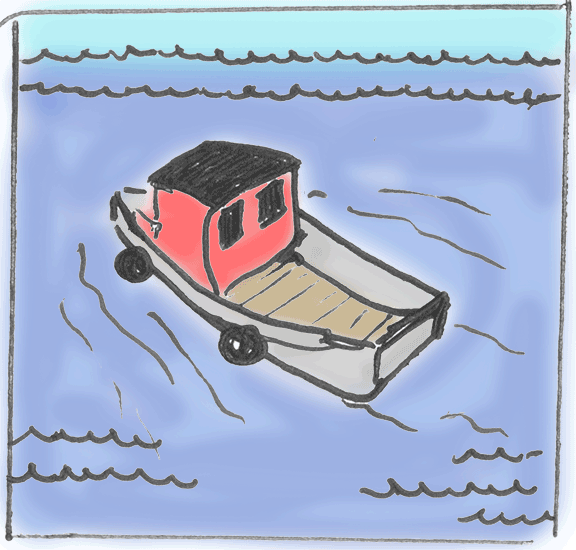
The film supports the theory of “boundary extension,” which dictates, according to Psychology Today, that if you showed audiences a fin or a shadow or a barrel, they would ink the rest. Humans are hard-wired to expand upon the world with possibility. With ourselves.
Jeffrey Vorhees, a Martha’s Vineyard local boy who played Alex (who changed my life), snuck into Shark City one evening. The overworked, despondent crew got drunk and left the entrance unguarded. Vorhees tiptoed upstairs to the warehouse. Scattered everywhere, he found too-many styrofoam cups, discarded wires, and black drums of mysterious fluid. Above the chaos hung the Bruces in mid-flight.
Later, in London in 1991, artist Damien Hirst unveiled his floating-shark-in-formaldehyde installation, The Physical Impossibility of Death in the Mind of Someone Living. The tiger shark/art was caught by a fisherman off Queensland, Australia, a commission from the artist. Hirst reportedly said he wanted a monster “big enough to eat you.” When the shark began decaying because of improper preservation, a new shark was ripped from the ocean and submerged in formaldehyde, made art again.
Vorhees got a glimpse of a proto-Hirst installation—the Bruces, mouths open, swaying midair in Shark City. Yet even at night, they seemed pathetic to young Vorhees, the future Bruce victim. The sharks’ stomachs lay exposed. Hoses and wires dripped downward, disemboweled, revealing messy, brutal, human tinkering.
Humans have long dreaded leviathans. In ancient Greece, Herodotus described a fleet of 300 ships caught in a storm, crashing into cliffs off the coast of Athos. Twenty thousand sailors slipped into the raging sea. The men beheld “sea monsters” rushing in to “seize and devour” their comrades. Later, Renaissance naturalist Guillaume Rondelet described removing contents from sawed open sharks, revealing, among other oddities, a headless knight in a full suit of armor.
In 1749, a 14-year-old Brook Watson (future Mayor of London) swam Cuba’s Havana Harbor and had his leg bitten off, a trauma immortalized in the oil painting Watson and the Shark by John Singleton Copley. The grisly canvas stirred a sensation in England. In the oil, a young, naked, powder-pale Watson flails in the harbor, right foot shark-amputated. The ocean fogs with red. Desperate companions try hauling Watson into a rowboat as his face spreads with terror. The shark, only one frightening eye visible, its mouth agape, rushes back for the rest of Watson. The fish seems to materialize from waves, most of the monster hidden by sea, by art.
A contemporary critic wrote of Copley, “He has improved upon the horror of the shark, by leaving it unfinished… No certain and known danger can so powerfully arouse us, as when uncertain.”
Perhaps the most compelling moment in the film based on Peter’s book is not Bruce, but a story. A monologue by English actor Robert Shaw, playing shark hunter Quint, detailing, in his boat’s swinging, prison-like, low light, the USS Indianapolis’s sinking in WWII. Nine hundred men left the ship’s torpedoed wreckage and faced dehydration, drowning, exhaustion, and a swarm of sharks who ate their legs and torsos. Three hundred and sixteen left the water.
Around the world, half the population lives within sixty miles of coastline. Sharks thrive in the sub-terrestrial dreamworld, a mystery that spreads from distant shores and unfathomed depths, smothers humans with tsunamis, and crumbles cities in hurricanes. In the wee hours and remote depths, ocean is blacker than space, and sharks possess eyes the color of the night sea.
A shark is alien, unnerving, with a body that never stops moving, a nose that can hunt down our vulnerable, wounded spots, black eyes that never close.
Still, you are much, much, much more likely to drown than meet fate in a shark’s bite. A person has better odds of dying from a coconut falling on their head than from a shark attack. According to data collected by the Florida Museum, Americans are 27 times more likely to be bitten by a person in New York City than by a great white in the sea.
In July 1990, a 39-year-old bank manager boarded the ride’s pontoon boat in Orlando with his family. The boat’s railing snapped during a Bruce attack, and the bank manager fell overboard, his children watching and screaming.
A human-made monster approached, gnashing teeth, black eyes rolling over. In the early versions of the ride, the Bruces were equipped with actual shark teeth. The man floated near its mousetrap bite. The kids cried, “The shark’s gonna eat Daddy! The shark’s gonna eat Daddy!” The ride had given them real horror.
An employee slammed a kill switch, and another pulled the bank manager out of the brackish, oily water. The mechanical monsters consumed hundreds of gallons of hydraulic fluid, which seeped into the pond. The EPA later sniffed out Universal’s pollution, and tests showed high levels of toxic metals in the water. The film company was forced to apply for an industrial wastewater permit for its amusement ride.
The people on the pontoon boat applauded, believing the bank manager’s near-death part of the story. The children thought their father’s death was the story, and the family later sued Universal and won an undisclosed amount.
When my daughter was a baby, I acted that I was devouring her pale, doughy stomach as she squealed like a heart-attacking rabbit and laughed. Charlotte still asks for Daddy-the-Monster, Daddy-the-Hungry Beast. She begs me to chase her around the house, and then she grins and hunts me instead.
We are attracted to creatures not of this world, who sweep in and make communion of our bodies. Monster stories activate the limbic system. Their tales mimic a bolt of lightning, a mammoth stampede. Hearts beat faster. Adrenaline floods the body; imagining monsters is like riding a roller coaster.
In Monsters of the Sea, EO Wilson writes, “We are not just afraid of predators, we are transfixed by them, prone to weave stories and fables and chatter endlessly about them… In a deeply tribal sense, we love our monsters.”
Film critic Antonia Quirke writes that there is love in horror films, “The primary meaning of which,” she writes, “is You are in safe hands.”
Horror stories—and by-proxy, monsters—are parents wagging their fingers, warning us not to die. These monster myths bar us from crossing road-killing streets, wading with predators. They remind us we’re not alone. When we create them, the under-the-ribcage message is tenderness because monsters have taught us about the world and can bring us closer to it. Without the ability to scare, we’d be extinct. But we sometimes forget who the monsters are.
After his novel and the movie, Peter used his money to travel and scuba dive Earth’s aqua-astonishing locations. He toured the oceans’ secrets, digested its many, colorful shapes. During one of his dives, Peters crept up on a reef littered with dagger-shaped shadows. They intrigued him, as horror often does.
As Peter swam closer, the shapes revealed themselves to be hundreds and hundreds of finned sharks lying motionless on the ocean floor. Corpses of hammerheads, makos, tigers—a carpet of slain predators, a horror unlike any Peter had ever written.
The sharks had been taken for soup, for a taste of the very thing that alerts humans to their presence.
Sharks cannot swim without their fins. They spin and flop around like newborns. Motion allows water to pass through their gills. Thus, finned sharks drown in the world they rule. They sink to sightless depths beyond our imagination.
When my family visited Universal Studios, Bruce stayed hidden from sight. The shark was not working.
We didn’t know then, but Universal had sued the company that made the ride for all the delays and malfunctions, a bloody legal melee. We saw water and thought “shark,” so we circled and circled Bruce’s lagoon, hoping to get a glimpse of the dark shape that had terrorized me—on screen, at the beach, on the edge of every pond. I wanted to see Bruce’s teeth, watch its fin make calligraphic strokes in the waves. Feel the rush of shark-fueled adrenaline.
I couldn’t have put words to this then, but movies like the one based on Peter’s book make me pay attention, confront mysteries, eye “the water” that is the human imagination run wild. I look out for lurking horror, would-be stories on land and sea that may treat me and my young daughter as prey. They make me remember how monstrous I can be.
Repentant, Peter wrote books with titles like Shark Life, which celebrated his once bedeviled monster. He said he would never have written his first shark story, “Knowing what I know now.”
Peter circled the globe, gave speeches, donated his riches to ocean conservation. He learned and taught others that sharks are an in-demand predator, a critical link in the ocean meal web. For all the ill-will directed at them, sharks are “a natural undertaker,” according to writer Michael Capuzzo—a keystone species. Without them, the seafloor would be tiled in corpses and brimming with invasive species. Without them, the ocean would be less alive.
Real monsters swim the human ecosystem, and my daughter will learn about them. She’ll hear the stories, sometimes from me. But before she does, I’ll screen movies that help her keep an eye out. To watch the water. And I’ll teach her about the creatures that keep oceans in check, that imbue their homes with mystery. I’ll tell of their near timeless beauty—leviathans swimming and cleaning the same seas for eons upon eons upon eons.
Perhaps when we recognize the monsters alive in our brains, we’re less likely to kill the shadows cleaning up after us.
Steven Spielberg’s film ends bucolically: two men swimming and chatting to a score of John Williams’s meditative tidal breakers.
Yesterday, a father surprised and scared his child, then hugged the soft, supple flesh and kissed her innocent ear.
In January 2012, 48 guests stood in line at Universal Studios, Orlando, for Bruce’s farewell. Harry Potter had swollen to apex, and Diagon Alley paved over the shark ride.
The last guests bordered a watercraft and listened to the young skipper regale them with stories of the island’s past, its monsters, its heroes.
A radio squawked about a rogue white shark. Rounding a corner, the guests witnessed a sinking, bubbling, half-eaten pontoon boat. In early versions of the ride, shredded clothing swirled, bobbing about the sunken vessel.
Suddenly, a shape cut the surface—a sign humans all know—circling and ducking beneath the waves again. Music skipped across speakers, and another fin nosed in the distance. The boat’s skipper wheeled the craft into a dimly lit, wooden boathouse for shelter while all around in the deep ocean blackness, John Williams’s dun-dun… dun-dun… assaulted them.
A robot smashed the boathouse and ripped through the dark while the boat thrashed and bobbed. The skipper revved the ship away, but Bruce pursued, a hydraulic mouth with piston teeth gnashing waves. People screamed, adrenaline engorging blood vessels, hearts chirruping like castanets. Stomachs leaped into throats, where stories are spoken.
The skipper wheeled away and slid the boat up to a pier with an all-too-convenient high-voltage cable, reminiscent of the finale in first film’s sequel where the hero-police-chief tricks the shark into biting the source of humans’ power. It fries, pop-corning the fish’s skin.
A telltale fin sprouted and barreled for the pontoon boat. Tourists bellowed. As I imagine, some laughed. Bruce volcanoed from the pond to more screams. A steamer trunk mouth lunged for panicking guests—an open portal to another world. Some guests peered in; they’d paid for this, after all. As in the movie, the robot shark mouthed a cable, frying itself inside-out, sparks spitting on the water. Cheers echoed across the lagoon.
Usually, at this point in the ride, a final Bruce appeared, coated in charred, bubbly, crispy skin to signal its demise—the demon slain, the story concluded, adults and children in each other’s arms.
Except, on that closing day, Bruce’s final run, the shark remained below water. It hid. Was Bruce dead or merely lingering? Broken or an ambiguity to end a tale?
The guests needed imagination to sluice the water for what must be beneath their bodies, perhaps so close they could touch it. A monster both tangible and imaginary, terrorizer and caregiver, our ancient oceanic foe and a story preparing people for reality. A leviathan reminding us, once we peered close at the brackish water, who the monster was. A shark created by a boy who was himself created by a shark. A beast that could, if it appeared, leap and devour and embrace within its loving jaws.
***
Rumpus original art by Ian MacAllen


